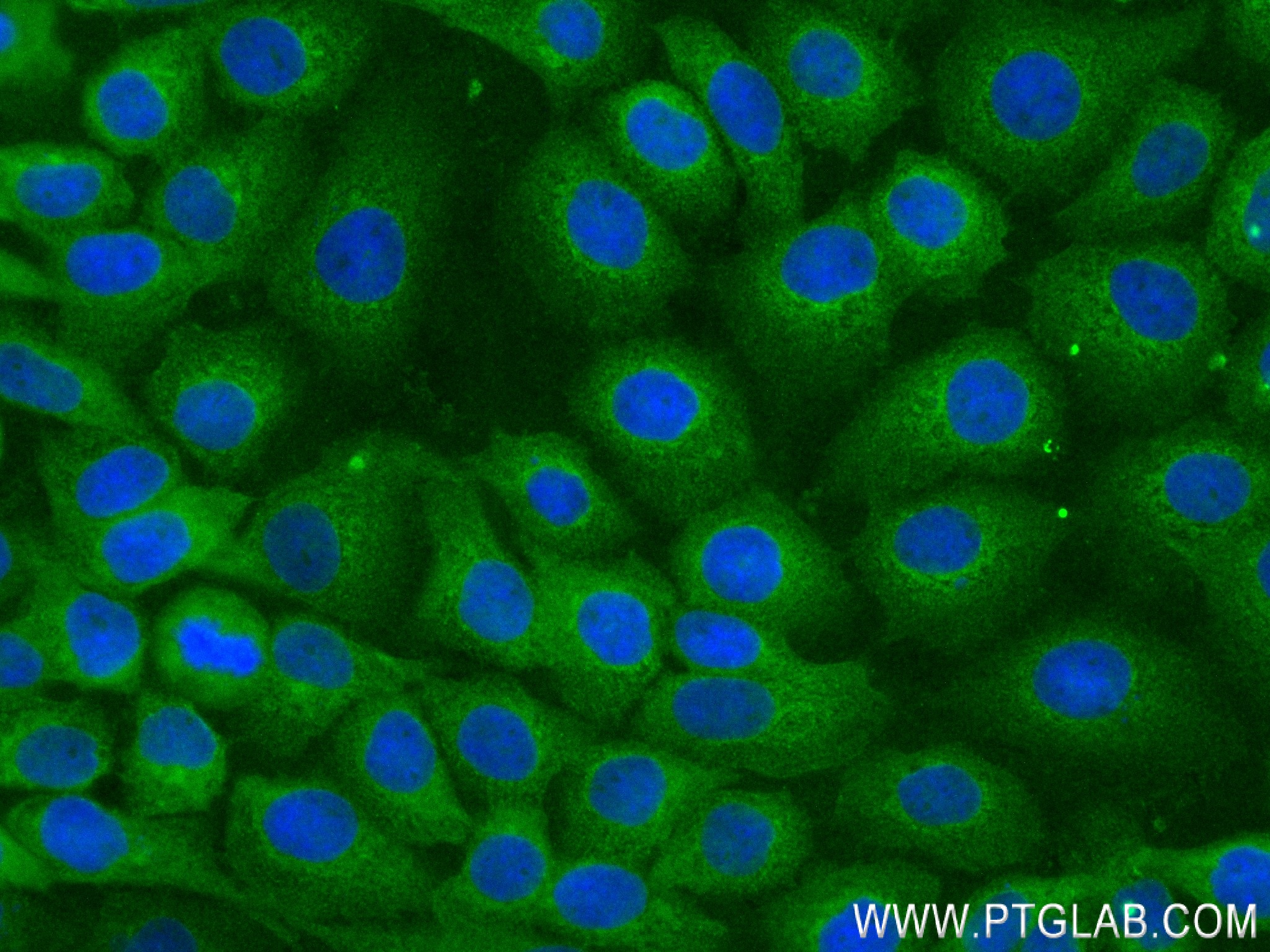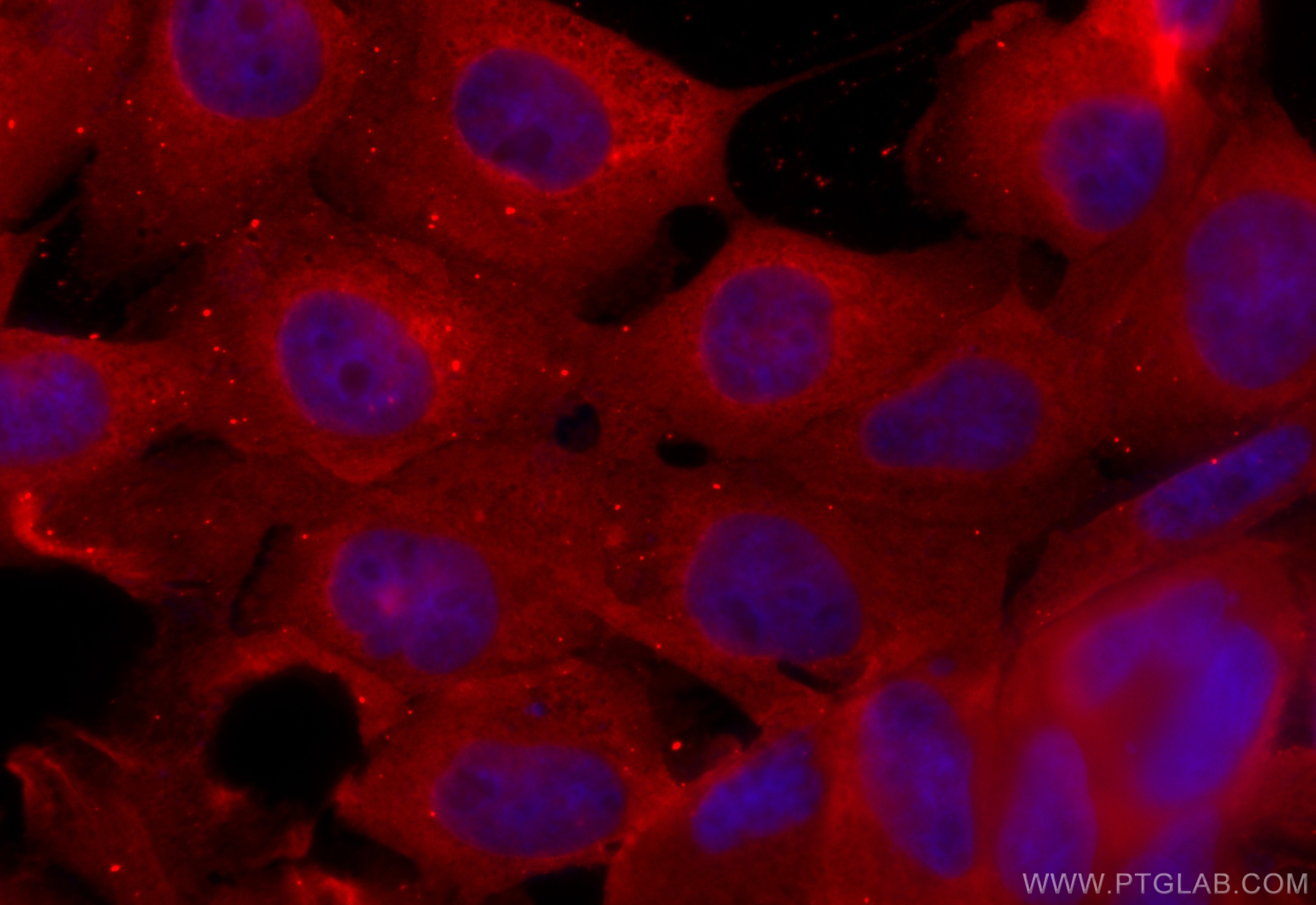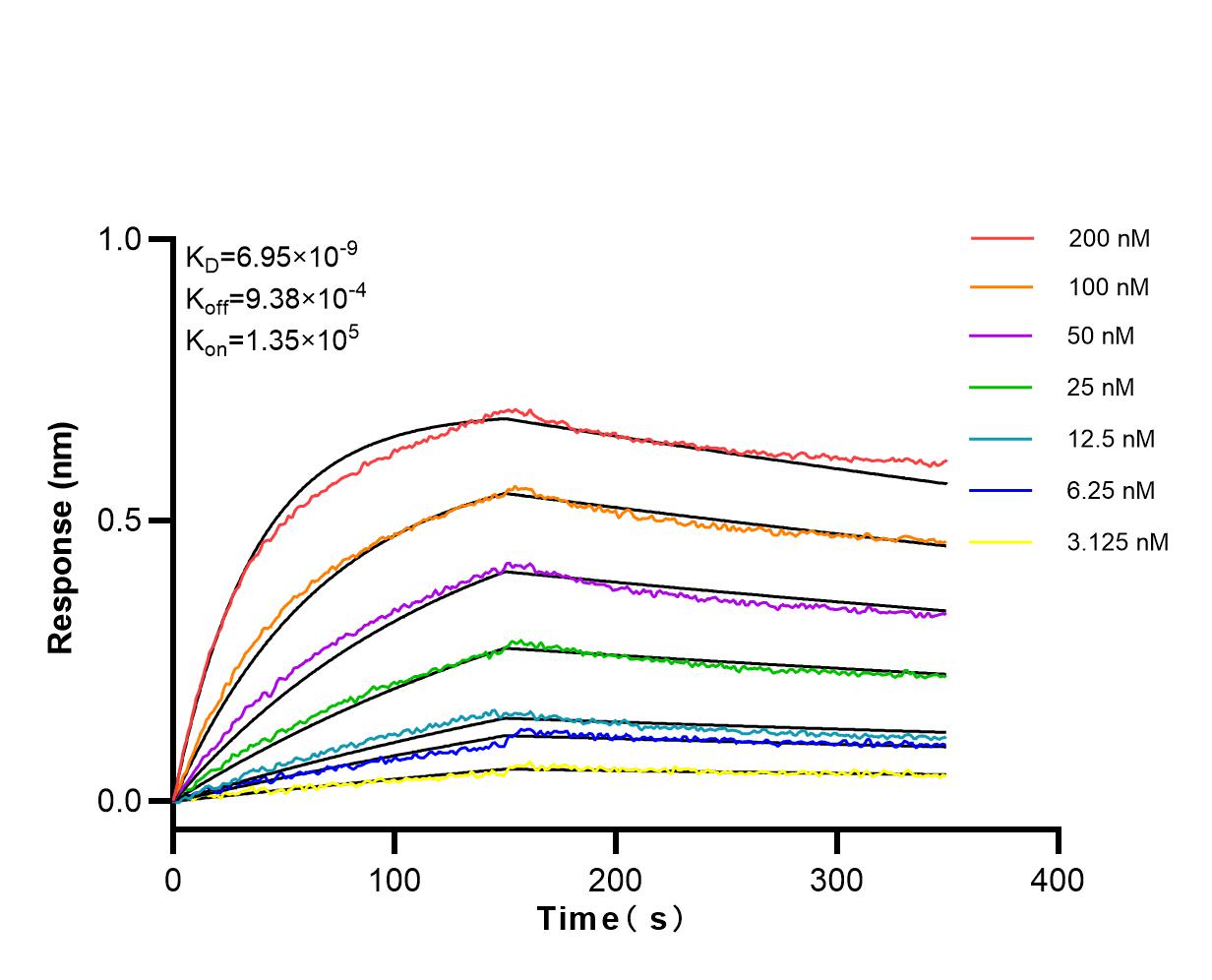验证数据展示
经过测试的应用
| Positive IF/ICC detected in | A431 cells |
推荐稀释比
| 应用 | 推荐稀释比 |
|---|---|
| Immunofluorescence (IF)/ICC | IF/ICC : 1:125-1:500 |
| It is recommended that this reagent should be titrated in each testing system to obtain optimal results. | |
| Sample-dependent, Check data in validation data gallery. | |
产品信息
83958-3-RR targets PEA15 in IF/ICC, ELISA applications and shows reactivity with human samples.
| 经测试应用 | IF/ICC, ELISA Application Description |
| 经测试反应性 | human |
| 免疫原 | PEA15 fusion protein Ag13782 种属同源性预测 |
| 宿主/亚型 | Rabbit / IgG |
| 抗体类别 | Recombinant |
| 产品类型 | Antibody |
| 全称 | phosphoprotein enriched in astrocytes 15 |
| 别名 | MAT1H, MAT1, HUMMAT1H, HMAT1, Astrocytic phosphoprotein PEA-15 |
| 计算分子量 | 130 aa, 15 kDa |
| 观测分子量 | 15 kDa |
| GenBank蛋白编号 | BC002426 |
| 基因名称 | PEA15 |
| Gene ID (NCBI) | 8682 |
| RRID | AB_3671536 |
| 偶联类型 | Unconjugated |
| 形式 | Liquid |
| 纯化方式 | Protein A purfication |
| UNIPROT ID | Q15121 |
| 储存缓冲液 | PBS with 0.02% sodium azide and 50% glycerol , pH 7.3 |
| 储存条件 | Store at -20°C. Stable for one year after shipment. Aliquoting is unnecessary for -20oC storage. |
背景介绍
Phosphoprotein Enriched in Astrocytes 15 kDa (PEA15), also known as PED-15, is a small, death effector-domain (DED)-containing protein that was recently demonstrated to inhibit tumor necrosis factor-α-induced apoptosis and to reverse the inhibition of integrin activation due to H-Ras. PEA15 is a 15 kDa protein that is highly expressed in the nervous system with particularly high levels in astrocytes and neurons of the hippocampus. PEA15 is a cytoplasmic protein that sits at an important junction in intracellular signalling and can regulate diverse cellular processes, such as proliferation and apoptosis, dependent upon stimulation.
实验方案
| Product Specific Protocols | |
|---|---|
| IF protocol for PEA15 antibody 83958-3-RR | Download protocol |
| Standard Protocols | |
|---|---|
| Click here to view our Standard Protocols |


